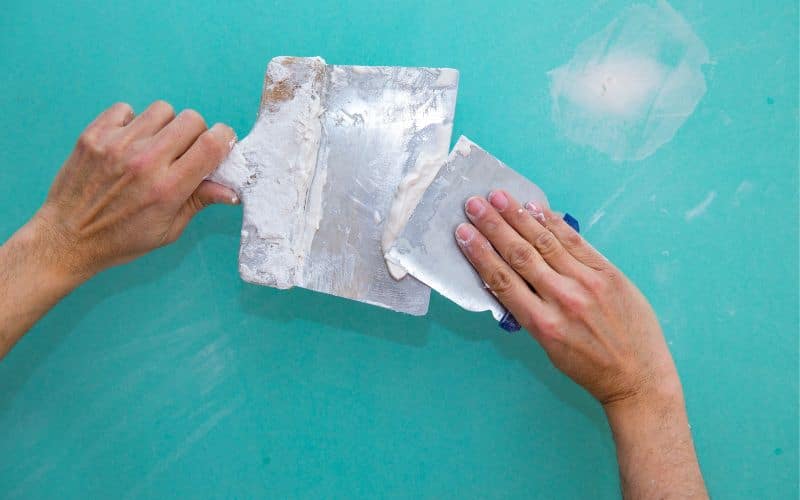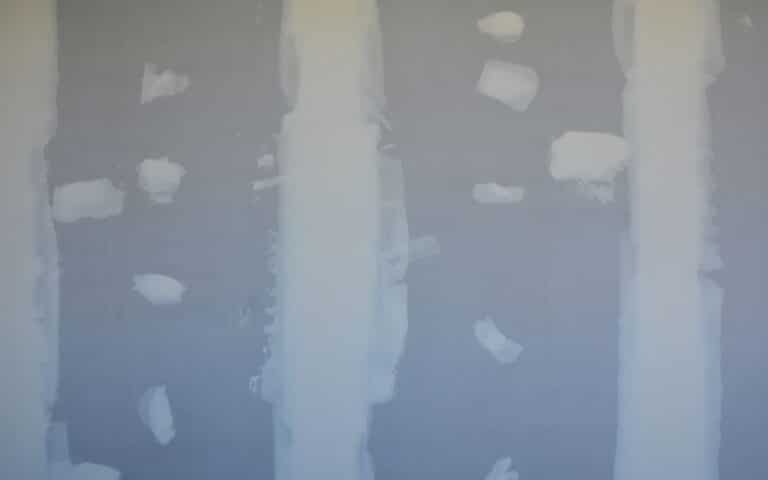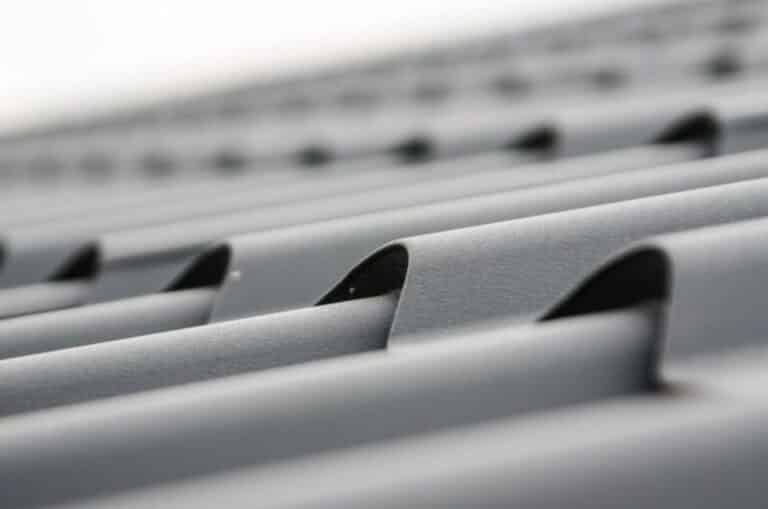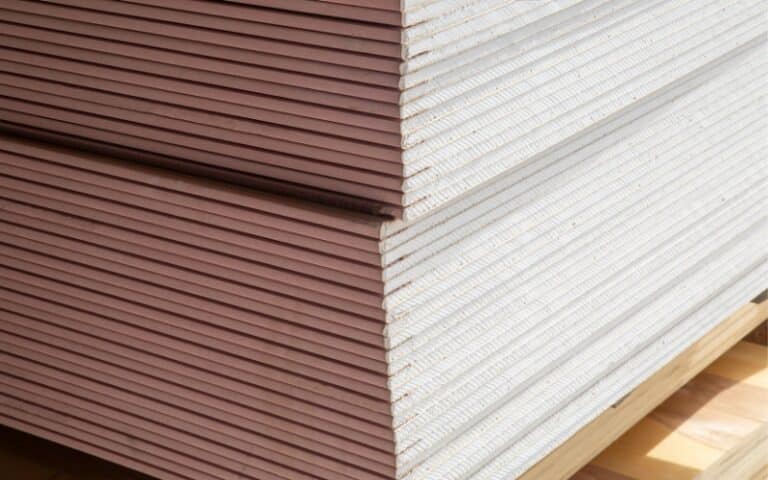It’s impossible to undermine the importance of blue and green drywall mud while using both for a building project.
However, they have different uses and textures, making people compare them to determine which is best for specific purposes.
For best results, it’s advisable to gather accurate information about blue and green drywall mud before using either.
If you want to know the uses and differences between blue and green mud, you’re in the right place.
Blue drywall mud and green drywall mud are different in texture and purpose. Blue drywall mud is lighter and more flexible, so it’s used as the finishing layer. Meanwhile, green drywall mud is thicker and stronger and best suited as an underlayer while layering drywall. Using green drywall mud first and finishing with blue drywall mud is best.
This article will explain the differences between blue and green drywall mud, the best drywall mud, and which drywall mud you should use.
By the end, you’ll also learn which drywall mud professionals prefer to use and which drywall mud is cheaper between blue and green.
Ready for a Drywall Quiz?
Blue and Green Drywall Mud; What are the Differences?

Several things differentiate blue drywall mid from green drywall mud, ranging from their purposes to textures.
While blue and green drywall mud may seem similar, they have specific striking differences that make them stand out in various building projects.
However, to further aid your understanding of blue and green drywall mud, their differences are explained below:
#1. Blue and Green Drywall Mud is Applied Differently
Green drywall mud is usually applied as an undercoat, allowing it to act as a fantastic protective coat.
It is known as an undercoat because it is the perfect coverage when applied after the first layer of drywall.
Green drywall mud also ensures the drywall application process is smooth, even, and secure during layering.
Conversely, blue drywall mud is applied as a finishing layer to make a smooth and professional finish.
After layering, you can also apply blue drywall mud over green drywall mud to achieve an excellent finished look.
#2. Blue and Green Drywall Mud have Different Consistencies.
One of the most glaring differences between blue and green drywall mud is their varying levels of thickness during application.
Green drywall mud is thicker and has a more concentrated texture than blue drywall mud, which makes their uses differ.
The thick consistency of green drywall mud makes it take longer to dry during layering, but it offers excellent coverage after it sets fully.
Also, green drywall mud’s thickness makes it a protective layer because it can easily cover scratches and bumps without cracking.
Blue drywall mud, however, has a lighter and creamier consistency, making applying it seamless and unproblematic.
The lighter consistency of blue drywall mud makes it a perfect finishing compound because it spreads over surfaces easily without leaving gaps or holes behind.
Also, blue drywall mud’s light consistency makes it flexible during use and the best mud for a perfect finish.
#3. Blue and Green Drywall Mud have Different Sanding Compatibilities
Green drywall mud is the thicker counterpart, making sanding harder than blue drywall mud.
To successfully sand green drywall, you would need extra tools and professional techniques to avoid experiencing bumps during the process.
Due to its thickness, sanding green drywall mud would take much longer than blue drywall mud.
Sanding green drywall mud over curves is tedious and may prove nearly impossible for some.
However, blue drywall mud is much easier to sand due to its soft and creamy texture, and the process takes less time.
You’d also notice that you’ll use less sandpaper while sanding blue drywall mud than green drywall mud.
#4. Blue and Green Drywall Mud Absorb Paint Differently
Green drywall mud has a thicker consistency and low flexibility, making it more challenging to absorb paint deeply.
This is a sore disadvantage for green drywall mud because you could have unwanted paint patches and less paint coverage.
Unlike green drywall, blue drywall mud is highly flexible, which makes paint absorption easier and more seamless.
However, applying excess paint at once while covering blue drywall mud could lead to bubbles in the paint job.
There are a lot of differences between blue drywall mud and green drywall mud, and those previously mentioned above stand out as significant differences.
Therefore, in the table below, other minor differences between blue and green drywall are outlined;
| Blue Drywall Mud | Green Drywall Mud |
|---|---|
| It is used indoors as a result of its low tolerance. | It is used outdoors because of its high tolerance. |
| It can be easily damaged because it’s weaker. | It’s stronger and can survive constant hits. |
| It is lighter and best used as a final layer. | It is 25% heavier and best used to fill cracks. |
| It is flexible and provides stability during application. | It is less flexible but acts as an excellent adhesive when applied. |
| It doesn’t shrink as a result of its low density. | It shrinks while drying as a result of its higher density. |
| It is flammable as a result of its high alkaline content. | It is less flammable as a result of its insoluble nature. |
| It has to be stirred thoroughly to avoid bubbling. | Its thickness prevents bubbles during application. |
Is Blue Drywall Mud Better than Green?
It’s impossible to state which is best between blue and green drywall mud because their characteristics and purposes differ greatly.
The only way to define which is better amongst the two drywall muds depends on the purpose you’re trying to achieve with them.
Green drywall mud is the best choice if you’re looking for drywall mud that serves as a sturdy agent while layering your wall.
Green drywall mud provides excellent coverage, protects every wall layer, removes holes and cracks, and has a high tolerance.
If you attempt to use blue drywall mud as an undercoat, you’ll most likely be disappointed with the aftermath when the process is complete.
This is because blue drywall mud is thin and flexible, which hinders it from providing adequate coverage for every layer or crack as you apply it.
However, if you’re looking for drywall mud that serves as a fantastic finishing coat, the best option would be blue drywall mud.
Blue drywall mud is best used as a finishing layer because its flexibility and creamy nature make it easy to spread over a wide surface.
It also provides a professional and smooth finish after being used as a final coat, making it an amazing option for finishing building projects.
Unlike blue drywall mud, applying green drywall mud as a finishing layer would be tedious and bumpy due to its thickness.
The reasons above prove that you can’t decide which is best when comparing blue and green drywall mud because their purposes vary.
Which Drywall Mud do Professionals Use, Blue or Green?
Professionals use both blue and green drywall for their building projects; it largely depends on the purpose either of them is being used to serve.
The major difference between professional builders and novices is that they can easily manipulate blue or green drywall mud to serve other purposes.
This stems from the fact that they have more experience with blue and green mud and more tools.
Professional builders also know how best to mix blue and green drywall mud whenever the need arises during installations.
Rest assured, even as professionals, they’re aware that you should only use blue and green drywall mud for their best-suited purposes.
Is Green Drywall Mud Cheaper than Blue?
The prices of green or blue drywall mud differ depending on the brand and the packaging size.
However, if you decide to focus on the pricing differences between blue and green drywall mud made by the sheetrock brand, green drywall mud costs more.
The sheetrock blue drywall compound, equivalent to 4.5 gallons, costs only $56.32 on Amazon.
On the other hand, the green drywall compound is equivalent to 5 gallons and costs $65.64 on Amazon.
While there’s an evident half-a-gallon difference in the gallon equivalent of both drywall muds, it creates a slightly more significant price difference.
Which Drywall Mud Should You Use?
The decision on which drywall mud you should use is based on the purpose you require drywall mud for your building project.
If you’re looking for drywall mud that would serve as a strong adhesive and layer as you install drywall, you should use green drywall mud.
This is because green drywall mud is thick enough to provide a protective and sturdy coverage on every layer it’s placed on.
However, if you’re looking for drywall mud that acts as a fantastic finishing for your installation, it’s best to use blue drywall mud.
Blue drywall mud’s lightweight consistency and flexibility make it the best option because it gives you a smooth finish and seamless application.






